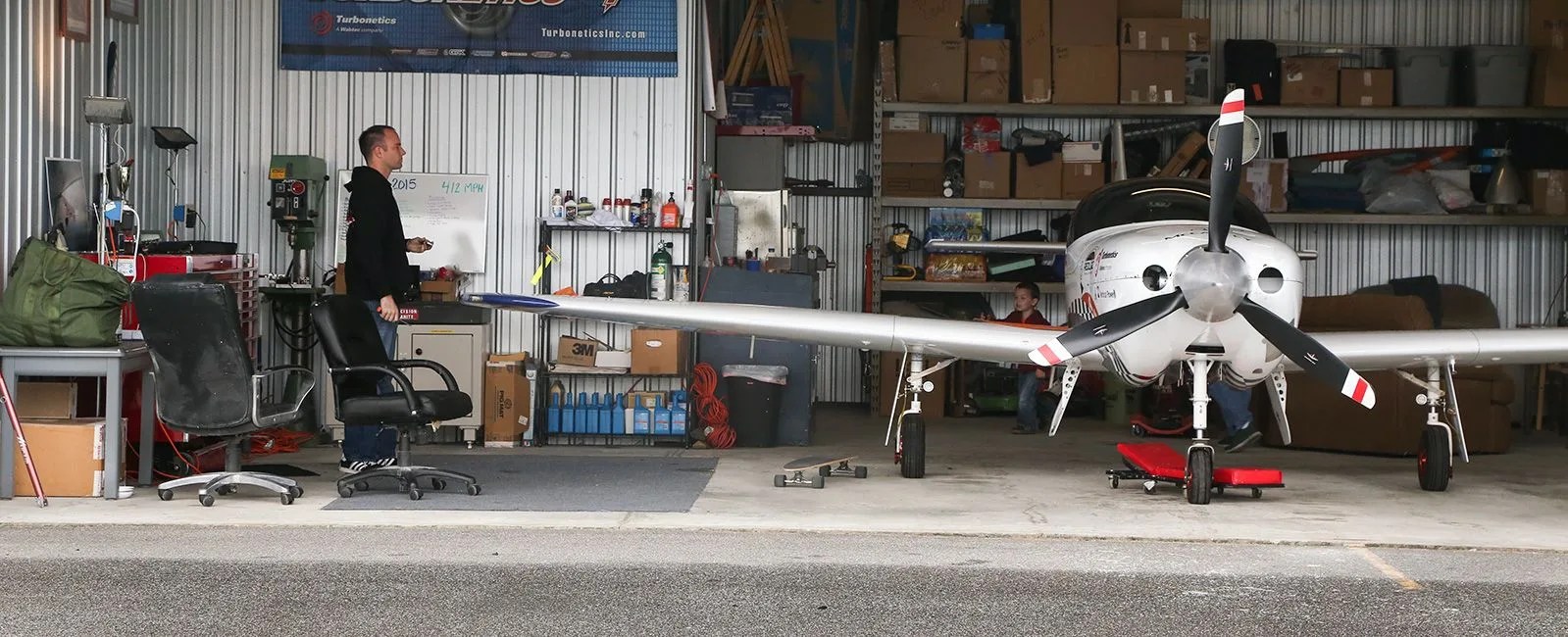“Occasionally I like to have a date that wasn’t the airport,” Jackie Findlay laments, “but that doesn’t happen very frequently.” She’s lounging in a plush chair in the corner of a hanger at Suffolk Executive Airport outside of Virginia Beach, VA. Her husband, pilot Andy Findlay, is seated next to me on the couch.
“Why would you want to go anywhere else besides the airport?” he retorts.
“I know. Look how awesome it is,” she says, dismissively. Behind us sits Findlay’s plane, a Lancair Legacy L2K, a single-prop racing plane that Findlay bought in 2010 and has put endless hours into. Around the garage, a handful of engineers clean things, tinker with electronics, rope in the two kids that wander around the airplane. There’s a whiteboard with plane performance goals. A flatscreen TV. Skateboards. GoPros. A handful of laptops. A fridge with sports drinks, water, beer. “We have a lot of fun,” Jackie adds. “It’s a good group.”
The group is Team One Moment Racing, a collection of, primarily, engineers who work at nearby STIHL for their 9 to 5, then tinker with airplanes in the evenings and on the weekends. Team One Moment races in the Reno National Championship Air Races, at the Sport Class, Gold level. Sport Class planes can reach speeds up to 400 mph (Findlay’s current top speed is 368 mph), and complete a winding 6.37-mile course in about 90 seconds. They fly, when racing, about 50 feet above the ground. Many of the competitors in the class are enthusiasts with deep pockets, the likes of retired CEOs who have disposable income to support their racing habit. Sport class requires that the planes be “amateur-built aircraft,” per the Sport Class Air Racing Association eligibility requirements, so there are no major sponsorships, and race teams cannot influence the engineering of their planes. The engines must be “internal combustion engine or engines totaling no more than 1,000 cubic inches” and capable of 200 mph. Beyond that, the class is open to a team’s creativity and ingenuity.
The Reno race happens annually, in September, with four days of racing. It started in 1964, and attracts around 75,000 spectators. It’s the primary competition for these planes, and teams work year-round preparing for the event.
“It’s the last true motor sport,” Findlay tells me. “Aviation racing is the ultimate of everything. It’s the ultimate of engineering challenge; it’s the ultimate of human challenge; it’s the ultimate of racing challenge.” And, it can all occur, in a “purist’s” motorsport sense, with normal, everyday people who like to go fast.
“It’s the ultimate of engineering challenge; it’s the ultimate of human challenge; it’s the ultimate of racing challenge.”

